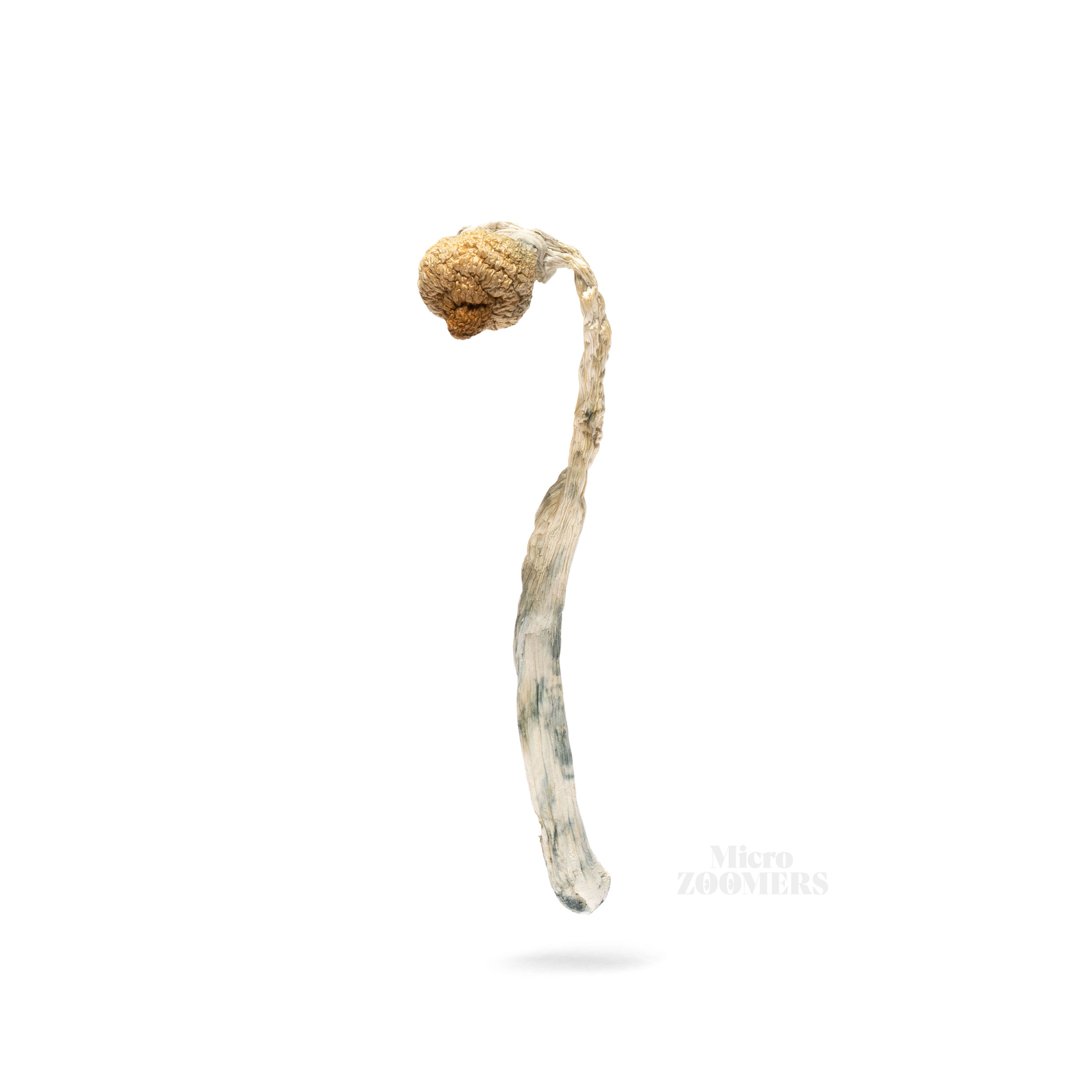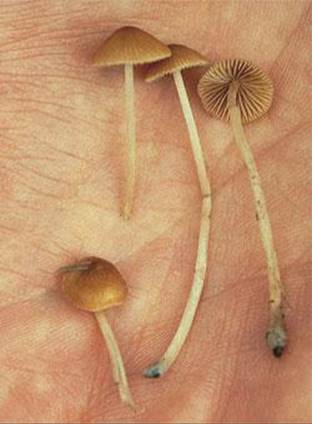
PSILOCYBE SEMILANCEATA “LIBERTY CAPS”
Psilocybe semilanceata also known as “Liberty Cap” is said to be one of the most potently psychoactive magic mushroom strains found growing naturally in Europe and in the Pacific Northwest. It once revealed an exceptionally high psilocybin level of 2.37%, and is amongst the species that also has relatively high levels of baeocystin, another neurotropic alkaloid. Its epithet “semilanceata” means “half spear” and refers to the shape of its cap which resembles the Phrygian-hat. For that same reason it is also commonly called Liberty Cap, Witche’s Hat or Liberty Bell. Formerly known as Agaricus semilanceatus and Panaeolus semilanceatus, it has a particularly well-established natural distribution in Germany.
Even though Liberty Cap is still unreported from Mexico and Central America, it is a very close relative of Psilocybe mexicana Heim, so much that the latter is often called Mexican Liberty Caps. Psilocybe authority Stamets says P. semilanceata it is to temperate grassland what Psilocybe Mexicana is to subtropical grassland.
With its petite stature and conical bell-shaped cap which remain this shape throughout its life, the magic mushroom strain Liberty Cap aka P. semilanceata is supposably an easy specie to identify even for amateurs. It can nonetheless be easily confused with dangerously poisonous Galerina, so hunters beware!
Like P. mexicana, Liberty Cap – P. semilanceata forms a sclerotia, a dormant form of the fungus in which is retained nutrients and often, psilocin and psilocybin. The sclerotia, also commonly called ‘Philosopher’s Stones’ or ‘Truffles’, can also be consumed for its entheogenic properties.
Though it is said to be a slow and arduous indoor growth, it is one of the most widely naturally distributed magic mushroom strain, that offers not only its fruits but also its dormant compacted roots, the delightful “magic truffles”. Other species that produce magic truffles are Psilocybe tampanensis, Psilocybe mexicana, P. mammillata, and Conocybe cyanopus.
Visual Description
PSILOCYBE SEMILANCEATA "LIBERTY CAPS" Potency
Habitat Origin





